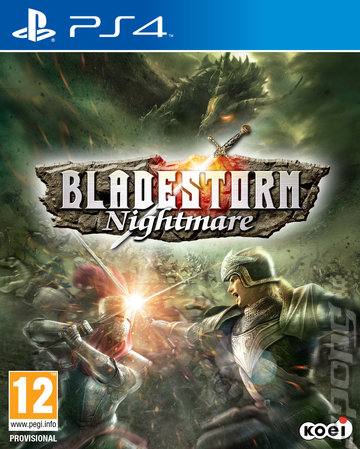My experience with tactical games like Bladestorm: Nightmare is minimal at best. I’ve dabbled in similar games like Dynasty Warriors, but I went into Bladestorm with absolutely no predisposition or opinion. Perhaps I’d find a new genre that I could get into, a new game series to find all entries, past and present, and devour them voraciously. Perhaps I could find some thrills in the one-two punch of the Hundred Years War campaign, followed up by the alternate history Nightmare campaign?
Perhaps not.
Bladestorm: Nightmare is a remastering/sequel of Bladestorm: The Hundred Years War, a tactical game from Tecmo Koei that paints the bloody war between England and France in broad, Japanese-flavored strokes. You play as a mercenary working both sides of the conflict, helping either England or France overpower their enemies, claim bases, and turn the tides of war. You do this in a semi-direct fashion, with your mercenary commanding different squads of troops (swordsmen, archers, etc.) as a perfectly synchronized phalanx, taking down entire armies in a matter of seconds. It’s empowering in theory, but stunningly boring in practice.
Each mission gives you exactly 10 minutes to try and complete your objectives (capturing enemy bases being the most prevalent), so you simply run to the nearest group of soldiers, take command, and then start running towards the nearest group of soldiers flying the opposite color. There’s little to no strategy to speak of, although there is a gentle rock-paper-scissors system to encourage one unit type against another. Sadly, it has virtually no impact on strategy or difficulty, as even units that were supposedly at a disadvantage felled their opponents without any real discomfort. There are some moments that make the game slightly more interesting at times (the introduction of Joan of Arc, for example), but it’s the same clunky, uninspired gameplay ad nauseam. There’s no real depth here, just a game that plays out like dozens of tiny Capture the Flag matches without any real challenge or strategy.
There are also some RPG elements at play, with between-mission visits to a pub (overseen by the worst accented Frenchman this reviewer has ever heard) allowing you to swap out armor or level up your command skills over certain units through the use of books. However, this takes the already unchallenging game and makes it offensively easy.
The Nightmare campaign tries in vain to spice up the historical aspects by suddenly bringing goblins, skeletons, and other fantasy tropes into the mix (all led by an evil and apparently quite bosomy Joan of Arc), but it’s still more of the same. It’s like a smear of margarine on a slice of white bread: it’s a teensy bit more palatable, but it’s still bland.
Visually, the game definitely wears its 2007 vintage on its sleeve: character models are pleasant enough, but nothing spectacular, and sometimes the skirmishes become incomprehensible jumbles of flesh and cloth, making enemy units hard to differentiate. There’s the potential argument that this more successfully emulates the chaos of war, but it throws the game’s already lean strategy right out the window. Some of these issues are reduced in the Nightmare campaign, where non-humanoid characters are easier to pick out from a throng of European men, but it doesn’t help that much.
Bladestorm: Nightmare is simply not fun to play. It’s not even awful, it’s just so overbearingly bland and repetitive that it becomes remarkably unremarkable. The fantasy elements injected into the Nightmare campaign are amusing (seriously, Joan of Arc looks like a cross between the Goblin Queen and Ivy Valentine), but it’s definitely not one for the history books.





























































